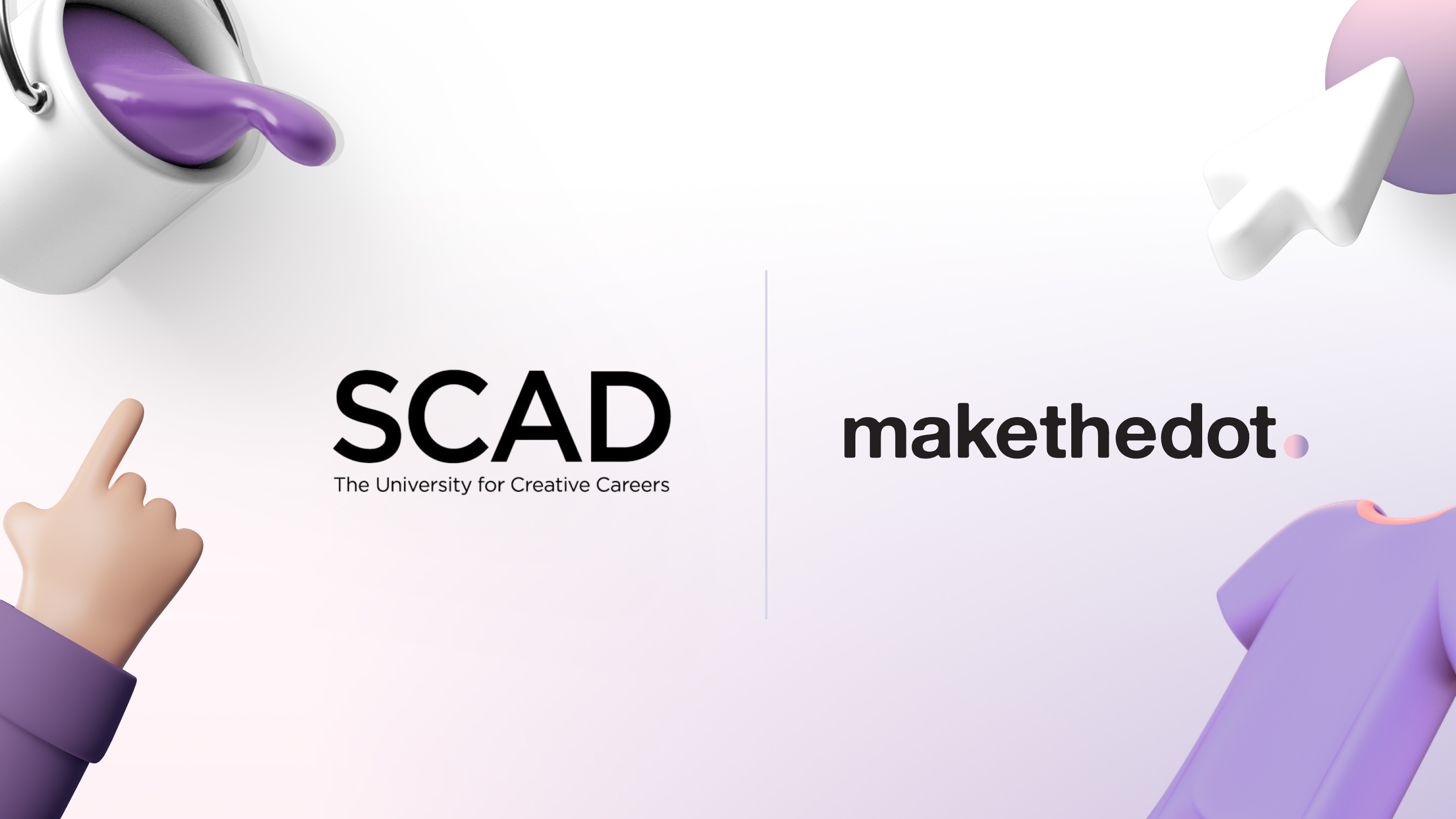How Berkeley College bridged the gap between ideation and product development, improving grades 40% with Make the Dot
Berkeley College is a New York university, serving 3,500 students across multiple academic departments and subjects, with fashion industry pedigree.
It’s fashion department is run by Andrea Kennedy, former Chair of LIM College, New York and Design Director of Bob Mackie, who aims to equip her students with the industry tools and workflow to compete for the most competitive fashion design jobs.

Students of the Product Development course are tasked with creating a design concept and the ability to translate that concept to real garment sample.
Meaning the students need to be able to create both interesting design concepts, that also have manufacturable fabrics, materials and specifications.
This workflow, therefore requires not only optimal visualizations and visual storytelling, but the ability to use and understand real fabrics and materials within the workflow.
The Problem
Creating a sample was a multi-step process, without the industry tools to aid the product development workflow, leading to poor visualizations and gaps between concepts and sample
For the Product Development students at Berkeley there are a number of steps in the workflow, that ends with the creation of a physical sample.
They are required to create a trends board, showing the trends and themes of their concept.
A concept board that contains the body of their concept and the visual story behind it
And finally a fabrics board, containing the fabrics they will use in their sample.
These separate projects all require alot of research, resources and visualization.
However, the current concept development and fabrication tools that were used had a steep learning curve, lack integration into the fashion design workflow, limited inspiration library, and lacked visual storytelling capabilities.
There was also no link to physical product development or creating an actual physical sample, through textiles and materials.

All of these factors meant that there was a lack of creativity in their concept development, due to the reliance on the tool’s limited image library, and the visual storytelling and presentation was below industry standard.
Furthermore, because there was a gap between the fabrics used in developing their concepts and actually sourcing for their sample, the two stages of the workflow were disjointed and incoherent.
.jpg)
With the fabric images downloaded from the interest little more than visual aids, rather than real-fabrics to be sourced.
The result of this problems meant that many students were failing in their ability to translate their concept to real garment.
The Solution
One design canvas for extension trend and inspiration research, concept development and fabrication
With Andrea’s 20 years of experience in the industry, she looked for a tool that seamlessly integrated into the fashion designers workflow to help solve these problems.
.jpg)
The students immediately experienced the benefits of the browser extension, which gave them the ability to add secondary research directly to their from any website or source.
Combined with primary research from their phones, this improved the overall quality and depth of their research and inspiration, directly affecting the concepts they were developing, for the better.

By using one design canvas created to aid visual storytelling, the students reported a huge improvement in the visuals and presentation of their concepts using Make the Dot, compare to other tools.
This vast improvement is the visual appeal of their concepts was noticed by the Berekley board of Trustees and Executives, with the difference to previous years notable to the naked observer.
These improved visualise and more cohrent visual storytelling was enough to give the students high grades in the concept development part of the course.

Joining the concept development and fabrication parts of the workflow was another way in which the project was streamlined, with students having the ability to both visualize and source real fabrics from real fabric stores in New York.
This alone joined two previously disconnect and disjointed parts of the course and aided in their ability to translate concept to real garment.
Last but not least, with many students first time designers without the technical expertise of a software like Photoshop, Make the Dots easy to use tool and self-taught nature meant more students could start their projects without training or assistance.
All of which lead to higher quality outputs, faster, and for more students.
The Result
Attract more students to enroll, better grades, and better final samples
During the project, Make the Dot was in constant communication with Andrea and the Product Development teachers, Moon Chung and Susan Walters.
Something in particular surprised us.
The improvement in the visual output from the classes was so stark that the boards would be used as marketing and recruitment material for potential future students.
The color picker tool is my favourite. I wish I had this tool when I was a trim buyer in the industry
Susan Walters - Product Development Professor
.jpg)
For the students themselves this was due to the browser extension giving them the ability to save a wide variety of secondary sources directly to their board, while combining it with primary resources on their phone.
The infinite canvas was also a way to comprehensively visualize and cluster all parts of their inspiration creating a coherent concept and overarching theme.
As a result, the students were able to improve the quality of output and visual storytelling, which enabled them to use their Make the Dot boards as their final design portfolio for graduate applications in some cases.
Using Make the Dot was so much easier than saving images to desktop, and is a super easy way to use it as a final portfolio
Natasha Guerrero- Fashion Merchandising and Management Student
Grades wise, the link between concept development and fabrication combined two sepearte parts of the workflow and improved the ability to translate concept to real garment.
All of which lead to better final samples and final course grades.




